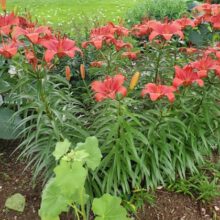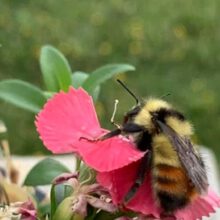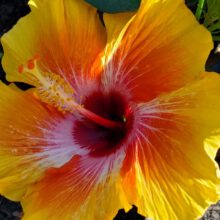Recognize Along With Controlling Pests In The Garden
In any garden, pests can occur in the form of sap-sucking insects, leaf eaters and root eaters. If nothing is done, the plants will soon look ugly. Pests can be controlled in a chemical or environmentally friendly manner. It is of course better to prevent problems as much as possible by intervening quickly if there are indications that there are pests in the garden. Major problems can often be prevented by regularly removing weeds, keeping the plants in top condition and luring useful animals such as birds and hedgehogs.
Recognize and combat the sap-sucking insects.
Juice-sucking insects weaken the plants, deform the leaves and cause bud growth. They can also transmit virus infections from one plant to another. It is therefore important to combat these insects as soon as possible. Some notorious juice sucking insects are;
Aphids.
Aphids target all kinds of plants, both in the garden and indoors. They can be seen as black, yellow, green, gray or pink insects that sit on buds, (young) leaves and shoots. The leaves become sticky from the honeydew left by the insects. If a single plant is affected, it is often sufficient to spray the insects of a plant with a strong jet of water. Chemical control can be carried out with insecticide against aphids, which is available at garden centers. Environmentally friendly control can be achieved by spraying with a mixture of soap and spirit or by creating good conditions for ladybugs and lacewings. Planting rue will stop most insects along with ants that transfer from plant to plant.
Whiteflies.
Greenhouse plants and cabbage varieties are susceptible to these white insects, which settle on the undersides of the leaves. They fly up like a cloud when disturbed. Chemical control can take place with contact sprays, but unfortunately this often has to be repeated. Environmentally friendly control can take place in a greenhouse by setting out the parasitic wasp Encarsia formosa. Plant marigolds between the plants for prevention.
Scale insects.
Many plants are susceptible, including Camellia, Laurel and Citrus varieties. Scale insects are very quiet on the underside of leaves, near the vein. You will see a brown, yellow, white or dark gray shield. Chemical control can take place with contact spray. Environmentally friendly control can be done by removing the insects by hand and then wiping the leaves with a damp cloth. The parasitic wasp Metaphycus helvolus can be used in a greenhouse. Furthermore, the scale insects can withstand a lot of sun in combination with a high humidity.
Recognizing and combating leaf-eating insects.
Leaf-eating insects can be a real pest for the garden. Plants can be eaten away almost completely quickly. Caterpillars can usually be found, but there are many other leaf-eating insects that move from plant to plant. These are less easy to deal with.
Caterpillars.
There are many different types of caterpillars, in color and size. Herbaceous plants, shrubs and trees are especially susceptible. Caterpillars leave large irregularly shaped holes in leaves and can often be found on the plant. Chemical control can take place with special contact means against caterpillars, which are available at garden centers. Environmentally friendly control can be done by manually removing caterpillars or on a cloth by shaking the plant.
Earwigs.
These yellow-brown colored insects with tangs on the abdomen eat all kinds of plants and prefer Chrysanthemums, Dahlias, Gladiolus and Clematis. Chemical control can take place with poison powder against crawling insects. Sprinkle this around the plant or directly on the animals themselves. Environmentally friendly control can be achieved by sheltering them from a straw-filled flower pot that is upside down on a stick. Empty the jar every now and then and you are off the earwigs. However, remember that earwigs are useful for the garden because they live by eating insects as well as fungi. It therefore remains a consideration of what you find more important.
Snails.
Snails can make irregular holes in leaves, but they can also eat a plant completely. A slime trail can be found on and around the plants. Very susceptible plants for snails are Hosta, Larkspur, Primula, Narcissus, Lettuce, Strawberries, Lily, Lathyrus and Tulip. Chemical control can take place with slug pellets. However, these are also poisonous to birds and hedgehogs. Environmentally friendly control can be achieved by catching them by hand, catching them with beer traps and protecting the plants by sprinkling gravel, crushed egg shells or shredded pine bark around them.
Weevils.
Weevils eat from the leaves of plants at night and take small irregular bites from the leaf margins. Larvae of the beetles eat plant roots. The weevil is a gray black insect with a short snout and kinked antennae. Chemical control can take place by spraying insecticides against beetles in the evening. Environmentally friendly control can take place by manually collecting beetles and white larvae and removing dead material around the plant. The larvae can be controlled with Steinernema carpocapsae (in the greenhouse) or Heterorhabditis megidis.
Recognizing and controlling root-eating insects.
Root-eating insects are difficult, because they are often not noticed until the plant suddenly falls over.
Cutworm.
These moth larvae live underground and are brown in color. At night they rise above the ground and eat plant stems just above the ground. Chemical control can take place with soil insecticide. Environmentally friendly control can take place by digging the soil, so that the earth’s caterpillars become visible to birds. They can also be removed by hand. Steinernema carpocapsae can also be used.
Crane fly.
These larvae of crane flies are gray-brown colored and elongated. They eat carrots in the ground. Vegetables, bedding plants and young plants are vulnerable. Chemical control can take place with soil insecticide. Environmentally friendly control can be done by digging the ground, so that birds can eat them or you can pick them up yourself. Make sure weeds are removed from the borders and, if necessary, put Steinernema carpocapsae in the ground.
Weevils.
The weevil larvae eat plant roots. The larvae are white in color with a brown head. Chemical control can take place by spraying insecticides against beetles in the evening. Environmentally friendly control can take place by manually collecting beetles and white larvae and removing dead material around the plant. The larvae can be controlled with Steinernema carpocapsae (in the greenhouse) or Heterorhabditis megidis.
Carrot flies.
The larvae of carrot flies gnaw roots of vegetables and bulbs. Chemical control will not work once the larvae are in the roots. Soil insecticide can be used during planting or sowing. Environmentally friendly control can take place by stimulating root growth by ridging the plants. Apply a plastic border of at least 30 cm high around the plants to repel the fly, which flies just above the ground. Take good care of birds and centipedes in the garden, these eat the carrot flies.



